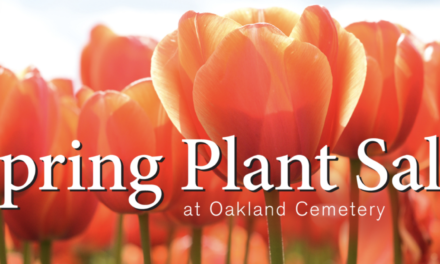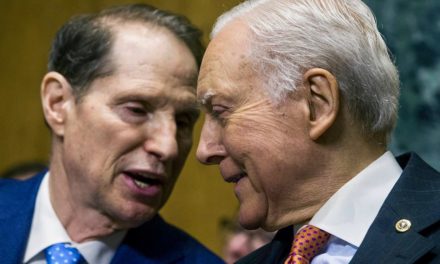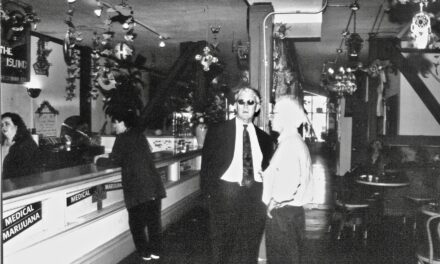 Ms. Schwartz is a journo-pusher. She begins by quoting a nurse with two small children who says, “I should have gone back on medication sooner in the pandemic than I did.” According to Schwartz the nurse “weaned herself off in time for her first pregnancy” –implying, but not saying that it was easy. When postpartum depression set in, the nurse went to a talk therapist who taught mindfulness and meditation. “After a complicated second birth,” Schwartz goes on, “she decided she needed more than just talk… She turned to Prozac again. Now, she said, ‘I’m a different person.'”
Ms. Schwartz is a journo-pusher. She begins by quoting a nurse with two small children who says, “I should have gone back on medication sooner in the pandemic than I did.” According to Schwartz the nurse “weaned herself off in time for her first pregnancy” –implying, but not saying that it was easy. When postpartum depression set in, the nurse went to a talk therapist who taught mindfulness and meditation. “After a complicated second birth,” Schwartz goes on, “she decided she needed more than just talk… She turned to Prozac again. Now, she said, ‘I’m a different person.'” Schwartz informs us that “millions of Americans… started or restarted psychiatric medication during Covid’s long and dreary run” but can’t be more specific because, she says matter-of-factly, “Tracking exactly which pills Americans are swallowing these days is difficult because much of this information is privately held.”
Why should that be acceptable to a reporter? If you have the prestige of the NY Times behind you, why not contact Shire LLC and Eli Lilly and request sales data? Let them explain why the extent of Adderal and Prozac use in the US is “proprietary information” and can’t be revealed to US, the people. Quote their blithery excuses, Ms Schwartz! What gives drug companies the right to conceal financial and scientific data that has implications for our public health? Remind us of how the system works. I forget their rationale.
Ms Schwartz uses secondary sources. “In 2019, the Centers for Disease Control and Prevention estimated that 15.8 percent of American adults took prescription pills for mental health…. What’s new is this: Almost a quarter of Americans over the age of 18 are now medicated for one or more of these conditions.”
Express Scripts, a pharmacy benefits manager, confirms that the use meds for depression, anxiety and ADHD have risen in different ways since the pandemic began. “Since 2017, there has been a 41 percent increase in antidepressant use for the teenagers included in the Express Scripts data (which consists of roughly 19 million people.) For this same 13- to 19-year-old bracket, in the first two years of the pandemic, there was a 17.3 percent change in anxiety medications. It had been a 9.3 percent rate of change between 2017 and 2019.”
A positive thinker, Schwartz speculates that “Part of the uptick could be explained by the fact that, stuck at home, people finally had time to seek out the health care they had been delaying.” (Lilly explains Prozac-induced suicides by saying the drug doesn’t induce suicidal ideation, it gives users the energy to act.)
Eli Lilly was granted approval to market Prozac on December 29, 1987, although serious red flags had been raised when the FDA examined the results of the clinical trials (meaning research Lilly paid for with grants to investigators at various universities and private research institutions). The clinical trials of Prozac excluded suicidal patients, children, and elderly adults –although once FDA approval is granted, the drug can be prescribed for anyone of any age. Approval was based, utlimately, on three studies indicating that fluoxetine relieved some symptoms of depression more effectively than a placebo, and in the face of nine studies indicating no positive effect. Only 63 patients were on fluoxetine for a period of more than two years; therefore, nobody knows the longterm effects .
The psychiatrist who ballyhooed Prozac most prominently in the early years was Peter Kramer, author of Listening to Prozac, a best-seller that Schwartz calls “his landmark 1993 book that helped crystallize the cultural moment.” What Kramer’s book crystallized was blockbuster sales for Eli Lilly. In the late ’90s. as serious adverse effects emerged, ranging from loss of sex drive to bizarre violent flip-outs, Kramer tried to curb his enthusiasm. Schwartz represents him as a doctor who was always “asking careful questions about who should use Prozac and why.” But that’s the opposite of the truth. He was a pusher extraordinaire.
Schwartz devotes only two sentences to adverse effects (I added the italics): “Debates rage on the efficacy and safety of antidepressants. In a recent article in The Nation, the writer P.E. Moskowitz, echoing a longstanding concern of some prominent skeptics, points out that antidepressants are much more difficult to get off than advertised and that the chemical-imbalance theory of depression on which it all rests has never been proved.” Note that only one danger is actually mentioned, and instead of calling it by its name –addiction– Schwartz composes an eight-word euphemism. And doubts about the chemical-imbalance theory are not adverse effects like nausea, headache, restlessness, sexual dysfunction, et al.
Having achieved fair-and-balancedness, Schwartz makes a hyperactive jump to Adderal –a stimulant drug marketed by Shire in 1996 that would eventually replace Ritalin as the best-selling pharmaceutical upper. In the 1980s Ritalin (methylphenidate HCl), a strong stimulant manufactured by Ciba-Geigy, was pushed successfully in US schools. Its use was justified by a pharmacological false claim: it supposedly had a “paradoxical effect” on the young, calming them down instead of getting them wired. In fact Ritalin had the classic effect of speed on people of all ages –focusing one’s attention on whatever is directly in front of one’s face (and causing loss of appetite, increasing jitters and insomnia). But the apparent effect was calming, and overworked teachers and parents accepted the downsides.
As adolescents left high school and lost access to Ritalin, many turned to cocaine –an expensive and dangerous alternative. Others found ways to score Ritalin and functioned satisfactorily. It was safer and cheaper than coke, a performance enhancer if used occasionally. The drug companies no longer needed the cockamamie “paradoxical effect” to sell stimulant drugs to children, and references to it dwindled in the medical literature.
When it came time to name the combination of four amphetamine salts that Shire had developed to compete with Ritalin, a clever wordsmith realized they were marketing not a chemical compound but a diagnosis that millions of adults now qualified for: Attention Deficit Disorder. The marketers’ battle cry gave rise to the name of the drug: “ADD for Al!”
Casey Schwartz informs us that “Within 10 years, more than nine million Adderal prescriptions were written. And from 2006 to 2016, use of prescription stimulants doubled… Among Americans ages 20 to 44, numbers of ADHD medications went up 7 percent from 2017 to 2019, but they increased by 16.7 percent from 2019 to 2021… New rules lifted the requirement that doctors see patients in person in order to prescribe them certain controlled substances, including Adderal.
“Newly minted telehealth companies like Cerebral, which was founded in 2020, provided customers with stimulant prescriptions after a 30-minute, online-only consultation.”
Schwartz ends her piece on the same upbeat note she opened with. Dr. Tina Nguyen, an LA psychiatrist, has a teenage patient for whom she prescribes “Prozac, Concerta, Gabapentin and Ritalin for when the Concerta wears off… Her mother, Ellie, isn’t concerned about the implications of the medications long-term. She herself is used to the idea of taking prescription pills over years, even decades.
“’I have been on Lexapro and Prozac for as long as I can remember,’ she said. ‘I started taking Prozac as a senior in college, and I’m turning 50 this year. I would not be able to function without it.'”
There’s a story to be written about the extent to which the burgeoning cannabis industry has cut into pharmaceutical sales in recent years. Surely in a nation as unhappy as ours there’s room for two, three, many forms of Soma. But Big Pharma begrudges the loss of every customer. They fund lobbyists to constrain the development of cannabis-based medicines and the distribution of recreational marijuana –and there’s no political movement trying to expose them, only “The Industry,” whose leaders kowtow to the DEA. Sales of Prozac and Adderal don’t keep rising thanks to word of mouth. The drug companies go to great lengths to induce MDs to push their mind-altering synthetics –and to fend off competition.
A Good Man Fallen Among Falun Gong?
The foremost critic of Prozac from the time it hit the market has been Peter Breggin, MD. Appearing as an expert witness on behalf of plaintiffs harmed by SSRIs, he has cost the the drug companies many millions of dollars. Their efforts to slander him have been relentless, starting with the charge that he was a Scientologist. He never was, but when I interviewed him in 1994, he said that his wife was an ex-member. “These cults attract many people who sincerely want to change the world,” he hastened to explain. His masterpiece, “Toxic Psychiatry,” published by St. Martin’s in 1991, is dedicated to Ginger “for helping me to love and to understand life.” The subtitle sums up Breggin’s humane approach to helping troubled people: “Why therapy, empathy, and love must replace the drugs, electroshock and biochemical theories of the ‘new psychiatry.'”
Over the years I’ve interviewed a number of brilliant doctors and scientists for whom I had great respect and whose work had heavy political implications –John Gofman, Paul Farmer, John R. Lee and Raphael Mechoulam to name four. I held Peter Breggin in the same high regard.
Peter and Ginger Ross Breggin are co-authors of a book they published in 2021, Covid-19 and the Global Predators: We are the Prey. Going online to obtain a copy, I was struck by an odd expression that seemed ominous:
Since people use various euphemisms for “died,” and because Breggin was born in 1936, and because I’m a worrier, I feared the worst. I emailed, asking “Does ‘has been called’ mean that Dr. Breggin has died? Devastating news! I got to know and greatly admire him when I was covering the marketing-of-Prozac story in the ’90s.”
A reply came from an assistant to the Breggins named Missy Bower: “I wanted to put your mind at ease, no Dr. Breggin has not passed.” I requested a review copy of the book and started receiving “Breggin Alerts.” I watched one in which humble, sweet Dr. Breggin was being educated by a fast-talking rightwing journalist named Alex Newman. Breggin told us viewers that Newman was brilliant and that he wrote for “the best newspaper in America… The Epoch Times.”
I hope they send a copy of the Covid-19 book. The website says they’ve already sold 62,000 copies. I bet they’ve got the goods on the vaccine manufacturers, the FDA, CDC, NIH, et al, and the nefarious plans of the global elites. But how much of the other stuff will it be piled under?






